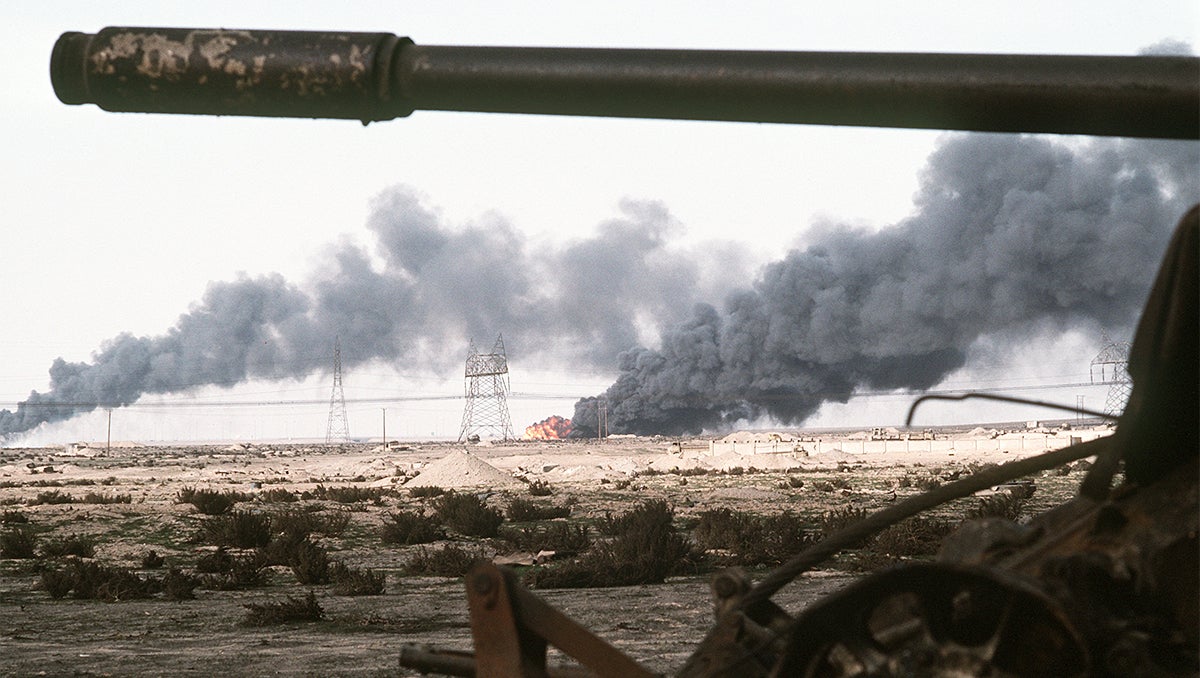Veterans Study Suggests Two Subtypes of Gulf War Illness

Posted in News Release | Tagged brain, brain research, Gulf War Illness, neuroimaging, neurology
Media Contact:
Karen Teber
km463@georgetown.edu
WASHINGTON (December 12, 2019) — Brain imaging of veterans with Gulf War illness show varying abnormalities after moderate exercise that can be categorized into two distinct groups — an outcome that suggests a more complex illness that previously thought.
Researchers at Georgetown University Medical Center, using functional magnetic resonance imaging (fMRI), have shown the Gulf War Illness patients have one of two different of kinds of changes after exercise when compared with healthy patients. The results clarify that Gulf War illness (GWI) leads to measurable physiological changes in the brain, suggesting multiple strategies for future treatments of Gulf War illness patients.
GWI affects about 25% to 30% of veterans from the 1990-1991 Persian Gulf War. Cognitive and memory problems (often described as “brain fog”), pain, and fatigue following mild to moderate exertion are similar to myalgic encephalomyelitis / chronic fatigue syndrome (ME/CFS).
In a study published December 12 in the journal Brain Communications (10.1093/braincomms/fcz039), researchers in the laboratory of James Baraniuk, MD, professor of medicine at Georgetown University Medical Center, imaged the brains of veterans with Gulf War illness before and after moderate exercise. The following day, the groups had a second stress test and a memory test during brain imaging.
There were no differences in fMRI scans between veterans before exercise. The veterans were then divided into those who had previously shown racing heart rates after standing up and those who did not. According to Stuart Washington, PhD, a postdoctoral fellow and lead author on the study, both groups of Gulf War illness veterans had differences in brain activity compared to healthy patients, but the type of abnormal brain activity was different between the groups. After exercise, the veterans prone to racing heart rates had a significant decrease in brain activity in the cerebellum, the part of the brain responsible for fine motor control, cognition, pain and emotion. In contrast, the group not prone to racing heart rates had a significant increase in brain activity in a different part of the brain that is responsible for planning of body movements and is also associated with chronic pain. The healthy patients had no changes at all.
“While these findings present new challenges to treating people with Gulf War illness, they also present new opportunities,” says Washington.
“Gulf War illness remains a debilitating disease, but we are getting a better handle on the cognitive dysfunction,” explains Baraniuk. “Now that different regions of the brain have been associated with two subtypes of GWI, we can study these regions through imaging and other techniques to improve diagnosis and, perhaps, to study future treatments.”
He concludes, “We are grateful to the veterans who participated in this research because they are providing the answers to medical questions and leading the charge to new therapies for GWI.”
In addition to Washington and Baraniuk, authors include Rakib U. Rayhan, Richard Garner, Destie Provenzano, Kristina Zajur, Florencia Martinez Addiego, and John W. VanMeter.
The study was supported by funding from The Sergeant Sullivan Circle, Barbara Cottone, Dean Clarke Bridge Prize, Department of Defense Congressionally Directed Medical Research Program (W81XWH-15-1-0679 and W81-XWH-09-1-0526), and the National Institute of Neurological Disorders and Stroke (R21NS088138 and RO1NS085131). The project has been funded in whole or in part with federal funds (UL1TR000101 previously UL1RR031975) from the National Center for Advancing Translational Sciences, National Institutes of Health, through the Clinical and Translational Science Awards Program.
Washington, Baraniuk and their co-authors report having no personal financial interests related to the study.
